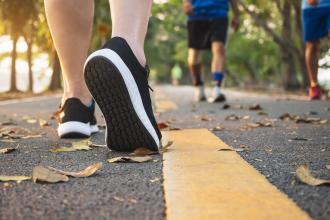Promoting physical activity
We have heard over and over again about the dramatic increase in obesity in our population, particularly among children and youth. Obesity rates in these populations have tripled since 1981. Today 15% are considered obese and close to 36% are overweight. Is this from poor eating habits or from physical inactivity? Children who watch over 5 hours of television a day have an obesity rate 8.3 times that of those who watch 2 hours or less per day. While it is true that we eat more fast foods than before and we tend to “supersize,” the evidence would point to inactivity as being the biggest cause for the dramatic increase in obesity.
We often look to schools to solve problems related to child development. Currently only 25% of students participate in daily physical education classes. While there are efforts to increase the length of time devoted to physical activity in school, these efforts must compete with many different demands on the school agenda.
What role can physicians play in combating what may become the leading risk factor for death in developed countries? Clearly physicians have played an important role in promoting smoking cessation with some success. Physicians, as a group, were the first to change their smoking habits when the link with cancer was first realized. Can we say the same about our physical activity levels? Do we follow the current recommendation to do at least some moderate exercise for 30 minutes on most days? Perhaps if we felt strongly enough about physical activity, we would follow this recommendation ourselves, and take this recommendation to our patients as well.
Today, there are opportunities available to help physicians become more involved in physical activity. This year the BCMA is sponsoring Docs on the Run, a team of physicians to run or walk the Vancouver Sun Run on April 17, or the Victoria Times Colonist 10 K Run on April 24 for those on Vancouver Island.* With the help of SportMed BC, the team is following an online training program for the runs. Many physicians of course are active in many different sports already. This too is to be encouraged.
We can be physically active in our workdays. Wearing a pedometer and keeping track of the number of steps we take can make us more aware of our level of physical activity. Encouraging our patients to do likewise will help some of them as well. Utilizing the Physical Activity Guide from Health Canada is another way to help patients. The guide has sections for people of all ages. The BCMA Athletics and Recreation Committee is looking at additional ways to help BC doctors promote physical activity in their offices. More information on this will be forthcoming.
The new Action Schools! BC program encourages students to be more physically active at school, at home, and in the community. In November 2004 the provincial government committed to expanding this project province-wide by 2010 to reach all students in kindergarten to grade 9. BCMA members around the province should consider using this as an opportunity to become a physician liaison for one or more schools in their area to support this important initiative.
The BCMA Council on Health Promotion has undertaken a project this year to support childhood obesity prevention and reduction. Visit the Healthy Kids web pages at www.bcma.org for more information, and watch for further updates in the BC Medical Journal.
In these days of scarce numbers of physicians and health care resources, we hear and know that physicians are stressed on all sides. However, increasing our own physical activity will help us deal with these stresses, and lead to enjoyment and improved health for ourselves, and ultimately our patients. LET’S GET MOVING!
—Ron Wilson, MD
Chair, Athletics and Recreation Committee
*To join Docs on the Run please call SportMed BC at 604 730-7255 or e-mail docsontherun@bcma.bc.ca

